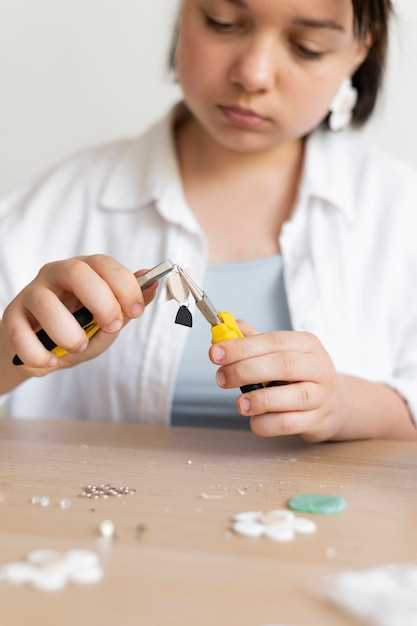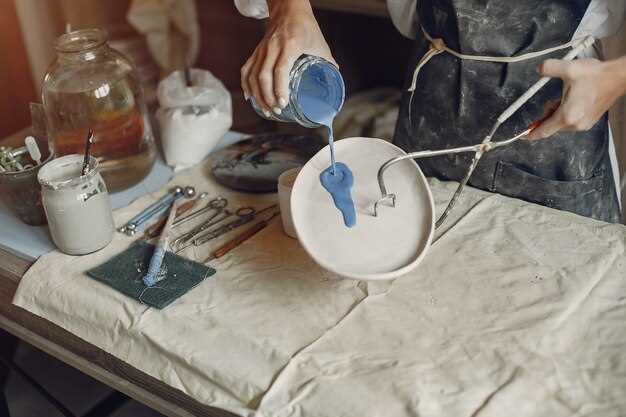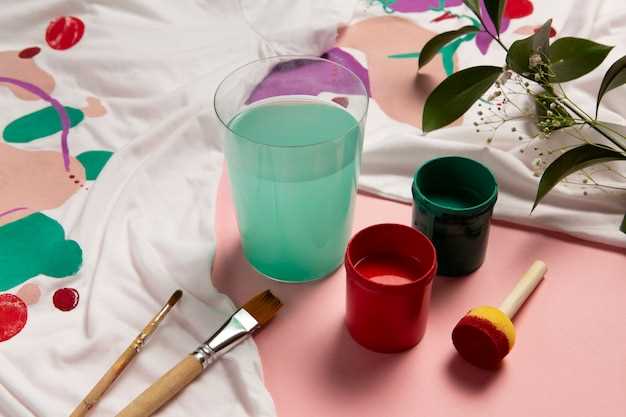The world of crafting beautiful adornments opens up a realm of creativity. Each piece can tell a story, reflecting your unique style and essence. As you delve into this fascinating craft, countless elements await your discovery. From vibrant hues to captivating textures, the possibilities are endless. Engaging in this form of expression brings joy and fulfillment. The journey is as rewarding as the finished product.
Within this artistic endeavor lies a wealth of skills to acquire. Selecting materials is just the beginning. Understanding the properties of different components plays a crucial role in the creation process. With practice, intricate techniques will start to flow naturally. This art allows you to weave your imagination into tangible forms.
Finding motivation is key. Nature, architecture, and even everyday objects can ignite inspiration. Embrace the eclectic influences around you, as they may guide your next masterpiece. Allow your personal experiences and preferences to shape your creations, resulting in pieces that are truly one-of-a-kind. Connecting with a community of like-minded enthusiasts will also enrich your creative journey.
As you embark on this adventure, remember that every artist started somewhere. Celebrate small victories and learn from challenges. Patience and perseverance cultivate growth in your craftsmanship. With each new creation, you will refine your style and techniques, enhancing your ability to bring your visions to life. The beauty lies not just in the outcome, but also in the joy of the process itself.
Beginner’s Guide to Jewelry Making with Glass

Creating beautiful items using colorful and vibrant materials can be incredibly rewarding. It allows for self-expression, creativity, and the joy of crafting something unique. This art form offers endless possibilities, from intricate designs to simple yet stunning pieces. Each creation tells a story, reflecting personal style and inspiration. As you embark on this artistic journey, you’ll discover techniques that can transform your ideas into reality.
Understanding the materials is essential. There’s a wide variety available, such as beads, charms, and pendants. Exploring different textures and colors can spark your imagination. You might find that certain hues and patterns resonate with you. The beauty lies in experimentation, as you’ll learn to combine elements in exciting ways.
Tools are your allies in this process. Basic equipment includes pliers, wire, and adhesive. Familiarizing yourself with these tools opens up new techniques. For instance, wire wrapping can create stunning designs and secure elements effectively. Additionally, learning to use a kiln for fusing glass can elevate your craft to the next level, allowing for a plethora of new shapes and styles.
Don’t forget about inspiration. Nature, art, and even everyday objects can ignite your creativity. Visit galleries, browse online platforms, or take note of your surroundings. Allow your imagination to wander and translate those thoughts into tangible pieces. Remember, each item you create is wholly original and showcases your unique touch.
Your journey doesn’t have to be solitary. Joining local workshops or online communities can enhance your skills. Engaging with other enthusiasts fosters an environment of learning and sharing. Experimentation is key; don’t be afraid to make mistakes. Each attempt, whether successful or not, teaches valuable lessons that refine your craftsmanship.
As you dive deeper into this expressive world, embrace the joy of creating. It’s not just about the final product, but the process itself. Every step offers a chance to learn, connect, and grow. Carry this spirit with you, and your creations will undoubtedly reflect your passion and dedication.
Creating Beautiful Glass Pendants
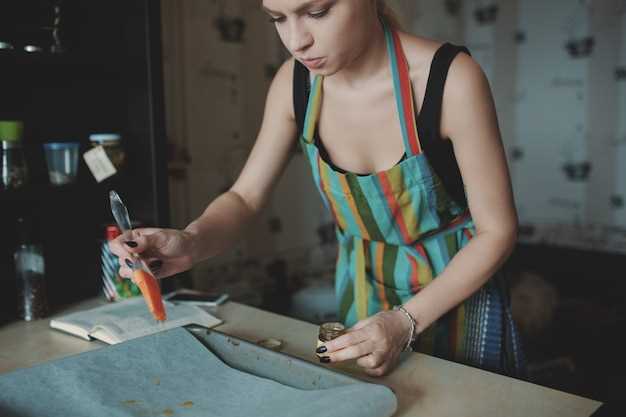
Crafting stunning pendants can be a truly rewarding experience. The shimmering surfaces and vibrant colors of these pieces capture attention effortlessly. Every element holds potential, and the creativity involved is limitless. Imagine turning simple materials into eye-catching treasures.
To begin, gather your supplies. Choose your favorite types of transparent or colored elements. Consider the shapes and forms you want to create. Experimenting with various combinations can yield unexpected results. Once you assemble everything, it’s time to dive into the crafting process.
Ensure that your workspace is organized and free from distractions. The choice of techniques can greatly affect the final product. Some may opt for fusing, while others might prefer lampworking. Each method has its charm, allowing individual expression to flourish. Transforming raw materials into art requires practice and patience, yet the outcome can be breathtaking.
Take time to polish and finish your pieces meticulously. The addition of unique findings, such as chains or cords, enhances the overall appeal. Personal touches or sentiments can be incorporated, making each pendant truly individual. In the end, it’s not just about the final product, but the journey of creation filled with exploration and discovery.
Understanding Pendant Styles and Designs
Pendants are captivating elements that can add a unique flair to any accessory. They come in various shapes, sizes, and styles, offering endless possibilities for creativity. Whether opting for classic elegance or modern allure, each pendant tells its own story. A well-chosen pendant can transform a simple necklace into a stunning focal point.
Traditionally, pendants have been utilized for both decorative and symbolic purposes. Popular designs range from simple geometric forms to intricate artistic expressions. Minimalistic styles often emphasize clean lines and subtle elegance, while bold designs can make a powerful statement. Additionally, the choice of materials plays a significant role in the overall aesthetic, influencing the pendant’s appeal.
Some styles incorporate meaningful symbols or charms, reflecting personal values or memories. A heart might signify love, while a star could represent aspirations. Moreover, experimenting with different lengths and placements can dramatically change the visual impact. For instance, an elongated pendant hanging low on the chest can create an air of sophistication, whereas a shorter piece framed close to the neck often conveys a more casual vibe.
Ultimately, understanding the diverse styles available empowers artisans to create pieces that resonate with their vision. Each design choice is an opportunity for personal expression, allowing individuals to curate their unique aesthetic. From bohemian flair to contemporary chic, the world of pendants is rich and varied, waiting to be explored.
Choosing the Right Glass Materials
Selecting appropriate materials is crucial for any creative endeavor. The diversity of options can be overwhelming, yet each choice can lead to unique results. It’s essential to consider your vision and the qualities you desire. Various types of glass offer distinct characteristics. Some provide vibrancy, while others may exhibit subtlety.
Understanding properties like weight, transparency, and color is vital. Each type of glass can behave differently when crafted or assembled. For instance, some melt at higher temperatures, while others will retain form easily. Furthermore, the finish can alter the appearance dramatically–smooth surfaces versus textured ones create contrasting effects.
Ultimately, the intended use will guide your selection process. If a striking design is your goal, consider bright colors and interesting shapes. Conversely, for subtle elegance, translucent or frosted options may be more fitting. Remember, experimenting with various materials will enhance your skills, broaden your creativity, and lead to unexpected outcomes.
Tools Needed for Pendant Creation
Creating beautiful pendants requires various essential instruments for success. Each tool plays a distinct role in the process, contributing to the overall design and execution. An array of items will help bring your vision to life. Whether you want to start with simple designs or dive into more intricate concepts, having the right equipment is crucial.
- Safety Glasses: Protect your eyes while working on delicate materials.
- Tweezers: Perfect for handling small components or intricate pieces.
- Pliers: Essential for bending wire and securing connectors.
- Wire Cutters: Necessary for trimming excess wire and ensuring a clean finish.
- Surface for Work: A sturdy and safe surface helps organize your work area.
In addition to these basic instruments, consider investing in specialized tools that elevate your crafting experience, such as a glass cutter for precision shaping or a soldering iron for joining components securely, which can greatly enhance the durability and texture of your creations.
- Glass Cutter: Enables accurate cutting for various shapes.
- Soldering Iron: Joins glass pieces together for a cohesive look.
- Ruler or Measuring Tape: Ensures your measurements are precise.
- Firing Kiln: For shaping and melting certain glass types.
Gathering these tools will set a solid foundation for exploring your creativity and refining your skills. Each piece has its distinct purpose, contributing to the overall outcome of your project, making the crafting process not only enjoyable but also rewarding.
Step-by-Step Pendant Making Process
Creating a beautiful pendant can be an incredibly rewarding experience. It’s an opportunity to express your creativity and craft something unique. Below, you will find a clear outline of the process, highlighting essential steps that will lead you to a stunning outcome.
-
Gather Your Materials:
- Choose your favorite types of glass.
- Get tools such as cutters, pliers, and a kiln.
- Don’t forget about stringing materials or chains.
-
Design Your Pendant:
Think carefully about the shape, size, and overall aesthetic. Sketching out ideas on paper can significantly help in visualizing the final product. Consider how colors will blend together and which designs will be most effective.
-
Prep the Glass:
- Clean the surface of your glass pieces.
- Cut the glass to your desired dimensions.
- Use a safe workspace to avoid accidents.
-
Fuse the Pieces:
Layer the glass pieces in your preferred arrangement before placing them in a kiln. The heat will melt the layers together, creating an impressive fusion. This is where true magic happens!
-
Finishing Touches:
Once cool, inspect your pendant for any rough edges. Smooth them out using tools or a grinding wheel. String it onto a chain or cord to complete your creation, allowing you to wear or gift your masterpiece.
The joy of crafting lies in the journey, not just the final piece. Each step, from concept to execution, contributes to a deeper understanding and appreciation of the art form.
Essential Techniques for Glass Bead Making
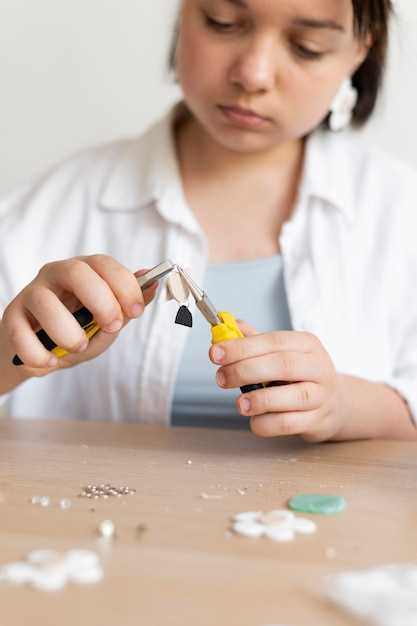
Creating stunning glass beads involves various skills and approaches. These methods help to shape, color, and finish the glass into beautiful art pieces. Mastering these abilities can lead to endless possibilities. From simple to intricate designs, knowing the basics opens many doors. Each technique carries its charm, influencing the final outcome.
One fundamental method is lampworking. This involves using a torch to melt glass rods, allowing you to shape them into beads. Another popular technique is kiln forming, where glass is heated in a kiln, enabling precise control over the glass’ texture and form. Additionally, you’ll find that fusing glass can create layers of colors and stunning patterns.
| Technique | Description |
|---|---|
| Lampworking | Using a torch to melt glass for shaping. |
| Kiln Forming | Heating glass in a controlled environment for precise results. |
| Fusing | Combining layers of glass through heat for unique designs. |
| Blowing | Creating hollow shapes by blowing air into molten glass. |
Experimenting with different styles will enhance your creativity. Always remember safety first; proper gear is essential. As you hone your craft, adding personal touches can set your creations apart. With dedication and a desire to learn, the art of glass bead creation becomes a fulfilling venture.
Overview of Bead Types and Uses
There is a rich variety of beads that serve different purposes in creative projects. From decorative accents to functional components, their versatility is remarkable. Certain beads catch the eye, while others add subtlety. Understanding the various types allows for imaginative expressions. Each type holds a unique charm that can elevate any design.
Glass beads, for example, are prized for their beauty and sheen. Acrylic options are lighter and often more affordable. Wooden beads bring a rustic feel, evoking warmth and natural aesthetics. Metal beads add a bold touch, offering durability and elegance. There are also ceramic varieties that introduce artisan quality and rich textures.
Budgets and preferences will influence the choice of materials. Whether opting for shimmering glass or earthy wood, each bead type contributes to the overall aesthetics in a distinctive way, transforming an ordinary piece into a statement of personal style.
Exploring the available options will inspire creativity and innovation. It can lead to discovering the perfect elements that resonate with an artistic vision. Thus, understanding bead characteristics enhances the creative journey while allowing individual expression to flourish.
Exploring Different Bead Making Methods
The world of bead creation is vast and fascinating. Each method brings its own unique charm and character. From traditional techniques to modern innovation, there is something to suit every artisan’s style. Understanding these diverse processes can unlock new avenues for creativity and expression.
One popular technique is lampworking. This involves melting glass rods over a flame to shape intricate beads. It allows for vibrant colors and designs. The artist controls every aspect, from color blending to intricate patterns. Another method is molding, where heated glass is poured into a mold to achieve specific shapes.
In addition, various approaches like fusion or slumping can create striking effects. This relies on layering pieces of glass and heating them to fuse together. The beauty lies in the unpredictability of glass as it transforms. Sometimes, it yields unexpected results that become cherished pieces.
Exploring these methods not only enhances skills but also encourages personal style. Each technique offers a different journey in the creative process, inviting experimentation and growth. Whether it’s through careful lampworking or playful fusion, the possibilities are endless.
Safety Tips for Working with Glass
Working with fragile materials can be an exhilarating experience, but it also requires a keen awareness of safety. When handling sharp objects, one must prepare adequately to mitigate potential risks. A few precautionary measures can make a significant difference. Being cautious is not simply advisable; it is essential for a positive and secure crafting experience.
Always wear protective eyewear when cutting or shaping. This helps shield your eyes from flying shards. Sturdy gloves should also be used to protect your hands from potential cuts. A well-organized workspace can further reduce accidents. Ensure that tools are in good condition and easily accessible, as a cluttered environment often leads to mishaps.
When using a cutting tool, maintain control of your movements to avoid slips. Sharp implements demand respect and concentration. Nevertheless, even with precautions in place, accidents can happen. Keeping a first aid kit nearby is wise, just in case. It serves as a reassurance that you’re prepared for minor incidents that might arise.
Additionally, inform those around you about your activities. Clear communication ensures that others are aware of your workspace. If you’re involved in projects that create dust, such as grinding or sanding, utilize a mask to safeguard against inhalation. Inhaling fine particles can be harmful over time. Remember that safety is not just a consideration; it’s a fundamental aspect of your creative process.
Video:
10 awesome JEWELRY MAKING tips & hacks! #1
10 awesome JEWELRY MAKING tips & hacks! #1 by The Art of Metalsmithing 37,731 views 3 years ago 4 minutes, 32 seconds
Q&A:
What basic tools do I need to start making jewelry with glass?
When starting out in glass jewelry making, you’ll need a few essential tools. These typically include pliers (such as round nose, chain nose, and flat nose), wire cutters, a beading mat to help organize your materials, and a hot glue gun for attaching components. Additionally, it’s helpful to have a selection of wire, eye pins, and jump rings for connecting beads and creating different designs. As you progress, you might want to invest in specialized tools like a glass cutter, kiln, or torch for more advanced techniques, but for a beginner, the basic tools mentioned will set a solid foundation.
Can I safely use regular glass for making jewelry, or do I need special types of glass?
While regular glass can be used in jewelry making, it’s generally recommended to use specialized types of glass that are designed for crafting, like lampwork or fused glass. These types are responsibly made to be safe and durable for jewelry. Regular glass can be more prone to breaking and may not withstand the wear and tear of daily use. If you do opt for regular glass, ensure it’s annealed (a process of heating and cooling to relieve internal stresses) to improve its strength. Safety is crucial, so always wear protective eyewear when cutting or shaping glass, regardless of the type used.
What techniques should I learn first in glass jewelry making?
As a beginner, it’s best to start with basic techniques that will give you a solid understanding of glass jewelry making. Some fundamental techniques include beading, wire wrapping, and simple fusing. Beading involves stringing glass beads onto wire or thread to create necklaces or bracelets. Wire wrapping allows you to create unique designs by shaping wire to hold glass pieces together. Fusing, which typically requires a kiln, involves melting glass pieces together to form unique designs. Starting with these techniques will provide you with the skills needed to create beautiful and durable pieces. Once you’re comfortable, you can experiment with more intricate methods like lampworking or mosaic.
Where can I find inspiration for my glass jewelry designs?
Finding inspiration for your glass jewelry designs can come from a variety of sources. Nature is a wonderful place to start—observe the colors, textures, and shapes in plants, flowers, and landscapes. Online platforms like Pinterest and Instagram have extensive communities of jewelry makers, where you can explore different styles and trends. You can also check out craft magazines or blogs focused on jewelry making for fresh ideas. Additionally, visiting local craft shows or galleries can spark creativity as you see different techniques and styles in person. Remember to keep a sketchbook to jot down ideas as they come to you, so you can develop them later into beautiful jewelry pieces.
